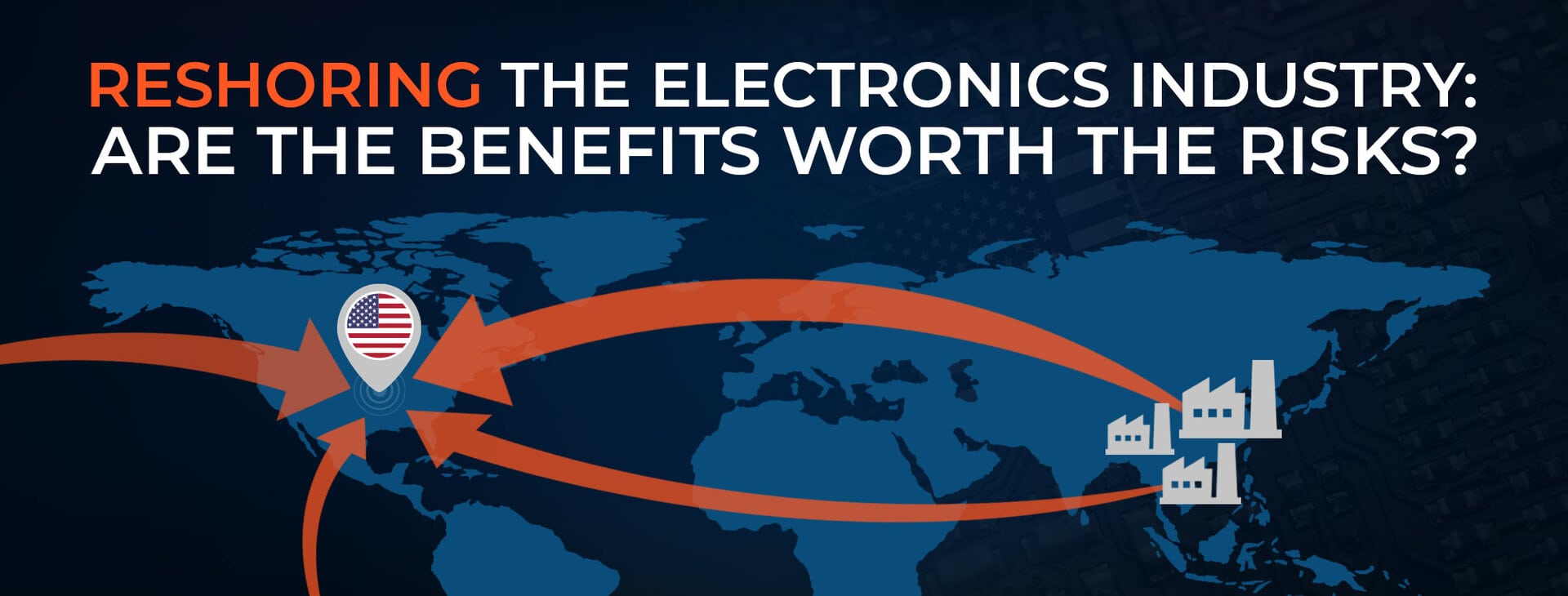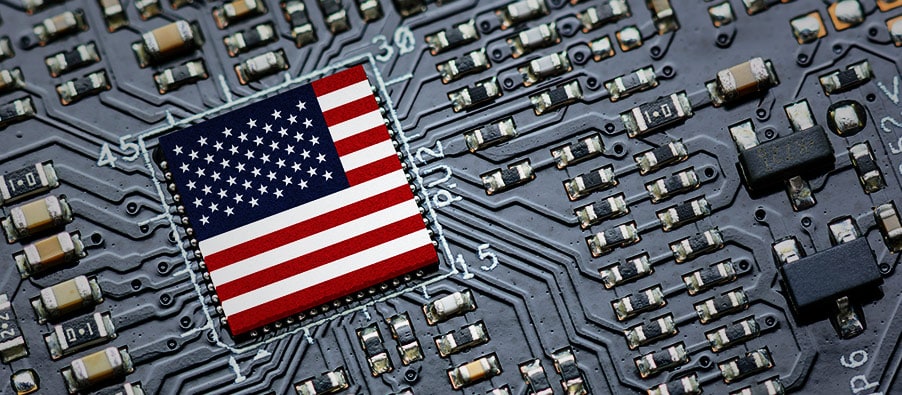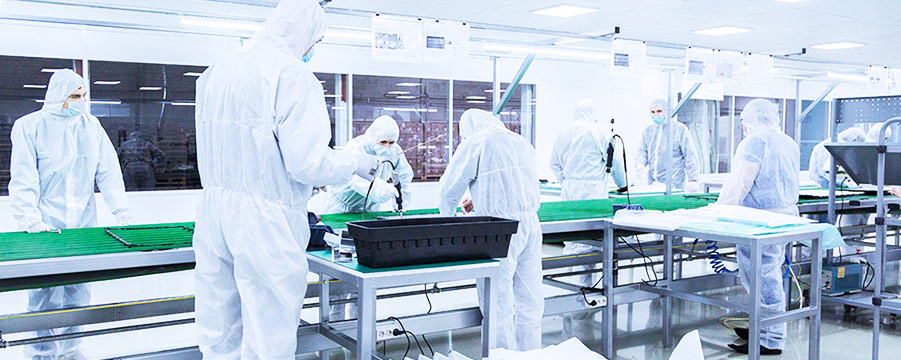
In recent years, governments like the US and UK have been pushing companies to bring their production and manufacturing back home. This process, called reshoring or onshoring, is meant to bring companies whose production occurs, either partly or in whole, in other countries back to the US.
The main purpose of this reshoring initiative is to increase domestic manufacturing and help alleviate some of the supply chain issues that were highlighted during the COVID-19 pandemic. The pandemic further exacerbated the growing concerns about globalization and the fragility of supply chains. Reshoring aims at reducing our dependency on factories in foreign countries so that we have more control over our supply chains and products.
The electronics industry and electronic components, such as semiconductors, are one of the areas of focus for the reshoring initiative by the US government. Many companies have already begun actively exploring onshoring and near-shoring options. In 2021 alone, over 1,800 companies reshored their production, including WAGO Corp., API Technologies Corp., and Epson Electronics America Inc. More companies, like Intel, Micron, and Qualcomm, have announced their plans for building new fab plants in the United States in the coming years.
There has been lots of discussion around the electronics industry and the risks and benefits associated with moving production back to the states. Let’s break down what we know about reshoring, its risks, benefits, and what we can expect for the future of the economy.

From trade wars, like the one between China and the US, and other political and social unrest in the world, many companies have begun strategizing ways to move away from the faraway countries they’re so dependent on for labor and production. Even back in 2019 companies were already looking for ways to become less dependent on the Asian market but the biggest push for reshoring in the last few years has been due to the COVID-19 pandemic. As factories temporarily closed or slowed their production, companies became increasingly aware of the vulnerabilities of current supply chains. Businesses were unable to control their own production or do anything to help alleviate the pressure on their supply chains, essentially being left at the mercy of factories across the world.
This was especially prominent when it came to semiconductor chips and the subsequent supply and demand fluctuations. During the pandemic, demand for semiconductors slowed as purchases for products like cars declined and companies needed less and less. Fabrication plants then slowed down their own production to match the new demand. By the time the demand increased, chips weren’t being produced as quickly as they were needed, leading to a gap in supply and demand. All of this further highlighted the dependency that countries like the US had on Taiwan and other Asian countries for semiconductors and other products due to offshoring production.
The fix? Start moving towards reshoring production and manufacturing in hopes of cutting costs (in the long run) and having more control over said production. The thought process is if we can bring production back home and prioritize reshoring businesses, we’ll have more control over our supply chains to mitigate risks and decrease our dependency on other countries.

The push for reshoring from governments such as the United States are all in hopes of preventing supply chain issues that appeared during the pandemic. A lack of supply, longer than normal lead times, and the fear of counterfeit components entering the market were supply chain risks that were common for the electronics industry. The government aided and incentivized reshoring projects, such as those outlined in the CHIPS & Science Act, are all meant to mitigate these supply chain risks.
The question is, how will reshoring efforts help prevent supply chain risks?
By having production occur closer to end-users, lead times can be minimized, and the negative impact of supply chain disruptions can be mitigated. It will also decrease dependency on other countries, meaning we won’t have to be worried about production being affected by trade wars or political unrest between other countries, such as China and Taiwan. Keeping production close to home also gives companies the chance to be hands-on if an issue does arise instead of having to wait because their factories are across the world. Being in such proximity can also help prevent counterfeit components from entering the market as products that are made closer to home are more likely to be authentic.
If we learned anything from the pandemic in terms of our economy, it’s that supply chains, especially those containing offshore production, are extremely fragile and can easily cause disruptions that take time to fix. Reshoring is being pushed so prominently by governments to prevent these same supply chain issues from reoccurring.
Besides just mitigating supply chain risks, reshoring production and manufacturing can provide many benefits, such as:
While the benefits of reshoring production and mitigating supply chain risks all sound great, there are a few challenges that the electronics industry faces when it comes to moving production back home.
One of the challenges is the time and costs associated with moving production back to the US. The process of relocating production is a complex and time-consuming undertaking that requires meticulous planning and coordination. Finding the location, getting approvals, and everything else necessary for a new plant to be built can take months, even years. Not to mention the cost of building new fabrication plants from the ground up and purchasing the equipment needed to produce components. All these costs are upfront and the return on investment from these plants won’t be immediate, leaving many worried about the losses instead of the future gains.
The other big challenge for reshoring electronic component manufacturing is the lack of skilled labor. The manufacturing and production of components, especially semiconductors, requires skilled labor in particularly specialized areas and the process of identifying and recruiting can be very difficult. Trends like the Great Resignation have caused the pool for skilled labor to decline, and although some business may be onboard when it comes to the time and costs of reshoring, other are still worried about the ability to recruit enough skilled workers to make the move worthwhile.

To help lessen the worry, the US government announced funding and incentives for companies that build new plants including funds for STEM programs to create opportunities for more skilled workers. The funding and incentives provided will help companies deal with the pressures of the reshoring process and encourage more businesses to consider doing the same.
Over time, reshoring efforts will create new jobs and reduce costs for shipping and transport, both of which can have a positive impact on the economy.
As new factories and fabrication plants open, a number of jobs will become available for Americans. It’s estimated by the SIA (Semiconductor Industry Association) that fabrication plants will create 1.5 million jobs. One million of those will be temporary jobs to build factories, and the other 500,000 will be permanent placements for workers in the plants. Not only will these jobs reduce unemployment rates, but they will help facilitate healthy economic growth. Plants, especially those located in areas where unemployment may be high, will offer job opportunities for many, leading to greater employment and higher growth for the economy over the coming years.

Another big impact reshoring will have on the economy is the reduced costs of transportation and shipping of products. Now, how can this impact the economy? If the costs for shipping and transportation are reduced, the price cut can trickle down to lower prices for consumers. Lower prices sound great as inflation has seen some of its highest spikes in recent years since the 1940’s. Shorter lead times will also help ease the supply and demand fluctuations we’ve seen in relation to semiconductors. By producing them closer to home, they’ll be able to reach end-users quicker in hopes of bridging the gap between supply and demand.
Reshoring production in the United States has the capacity to positively influence the US economy. It will take years to see these changes take place and impact our economy, but the benefits of reshoring look like they’ll be worth the wait.
If you are having a difficult time securing orders, reach out to us today.
We are experts at helping companies source EOL and hard-to-find components.